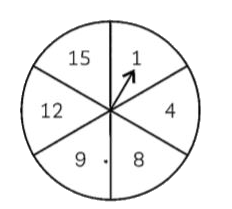If 29 is removed from (1, 4, 9, 16, 25, 29) then find the probability of getting a prime number.
Video Solution
Text Solution
The correct Answer is:P(prime no.) = 0
|
Answer
Step by step video, text & image solution for If 29 is removed from (1, 4, 9, 16, 25, 29) then find the probability of getting a prime number. by Maths experts to help you in doubts & scoring excellent marks in Class 10 exams.
Updated on:21/07/2023Topper's Solved these Questions
- PROBABILITYBOOK - CBSE COMPLEMENTARY MATERIALCHAPTER - PROBABILITYEXERCISE - SHORT ANSWER TYPE QUESTIONS-1
7 Videos
- PROBABILITYBOOK - CBSE COMPLEMENTARY MATERIALCHAPTER - PROBABILITYEXERCISE - SHORT ANSWER TYPE QUESTIONS-2
9 Videos
- PROBABILITYBOOK - CBSE COMPLEMENTARY MATERIALCHAPTER - PROBABILITYEXERCISE - VERY SHORT ANSWER TYPE QUESTIONS (Multiple Choice Questions)
7 Videos
- PRACTICE TEST-IIBOOK - CBSE COMPLEMENTARY MATERIALCHAPTER - PRACTICE TEST-IIEXERCISE - Section C
14 Videos
- QUADRATIC EQUATIONS BOOK - CBSE COMPLEMENTARY MATERIALCHAPTER - QUADRATIC EQUATIONS EXERCISE - PRACTICE TEST
10 Videos
Similar Questions
Knowledge Check
An unbiased die is rolled find the probability of
getting a prime number.A12B35C57D58When a dice is rooled, find the probability of getting an even prime number.
A16B13C12D56When a dice is rolled, find the probability of getting 4.
A16B13C12D56

What is the probability of getting a prime number on the spinner?
View SolutionA dice is thrown once. Find the probability of getting a prime number .
View SolutionA dice is thrown once.Find the probability of getting an even prime number?
View SolutionIf a dice is rooled, then the probability of getting a prime number is _______.
View SolutionAn unbiased die is rolled find the probability of
getting a prime number.
View Solution
